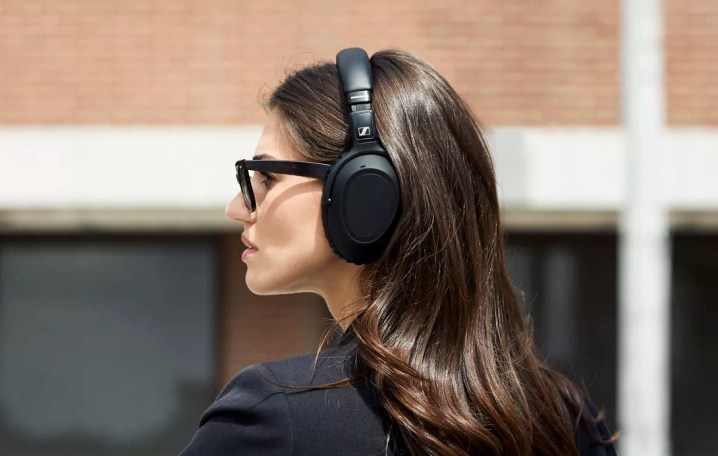
IFA 2019 was a disappointment. We attended the various media events and trawled the show floor for a week, and kept seeing the same kit from different brands — there wasn’t anything entirely inventive. But that doesn’t mean that there wasn’t some solid hardware at the event, because there was: Asus showcased a bonkers laptop, Philips brought along a gorgeous OLED TV, and Sony launched a new Walkman. With that in mind, here’s the best tech we saw at IFA 2019 (even if it isn’t the best on the market).
Asus ProArt StudioBook Pro X

Designed to rival the Apple MacBook Pro, the Asus ProArt StudioBook Pro X is a laptop that bundles desktop-class performance in a mobile form. We won’t dive into the specifications here, but it packs more than enough punch to handle just about any task you could possibly throw its way with ease. Want to render a video? No problem — the 64GB of RAM and 1TB SSD will take care of that. Want to stream a video? There’s a 4K Ultra HD screen. Want to play a game? The hardware should run almost anything, maxed out.
Diesel On Axial

Our own Andy Boxall fell in love with the Diesel On Axial, so it would be rude if we didn’t include it in our list of the finest hardware IFA 2019 had to offer. Granted, it’s a little on the expensive side at $350, but it’s worth it — introducing a wild, unique design that smartwatches have so desperately needed, while staying true to the Diesel brand. There’s (obviously) one significant difference between the On Axial and a traditional Diesel timepiece, though: It’s a lot smarter, running Google’s Wear OS to boot.
LG G8X Dual Screen

Announced as IFA 2019 was drawing to a close, the LG G8X ThinQ Dual Screen is the second dual-screen handset in the Korean’s line-up. Actually, scrap that — it isn’t. The G8X ThinQ is two separate products sold as a bundle, with the first being the device itself, and the second the Dual Screen cover that adds the second screen. But despite the name, there’s a third screen: The two obvious ones inside the case, then a small one on the outside. So behold, one of the world’s first multi-screen smartphones.
Philips OLED+ 984

We’ll cut straight to the chase: the Philips OLED+ 984 4K TV stole our heart. Developed in partnership with audio pioneer Bowers & Wilkins, it features an integrated soundbar and central tweeter, eliminating the need to invest in an expensive surround sound setup — for those who are after a basic, immersive viewing experience, at least. It’s the design where the television excels, though — the entire thing looks nothing short of stunning, from the television itself right down to the vintage tail light design of the tweeter.
Sennheiser PXC 550-II

Available in the United States from October for $350, the Sennheiser PXC 550-II is an incremental update to the well-received Sennheiser PXC 550. Keen to preserve the same award-winning experience the PXC 550 delivers, Sennheiser played it safe with the PXC 550-II, introducing Bluetooth 5.0, support for the AAC audio codec, and a new hardware button that triggers a voice assistant of your choice (Amazon Alexa, Google Assistant, or Siri). Sennheiser didn’t make the switch to USB-C, nor did it increase battery life.
Sony 40th Anniversary Walkman

By far the most interesting product on the list, Sony’s 40th Anniversary Edition Walkman is the ultimate reminder of what used to be, toting a logo on the rear and a carrying case inspired by the original Walkman launched in 1979. Obviously, it swaps old cassette tapes for digital music, though the capacity isn’t as large as one would have thought: It’s just 16GB. But there’s a neat little software trick that makes up for that — start listening to a song and the title appears on the 3.6-inch HD screen as a mixtape. Crazy, huh?
TCL TS9030 Ray-Danz Dolby Atmos Soundbar
However, it was TCL that stole the show with its brand new TS9030 Ray-Danz soundbar. Let’s cast the name aside and instead focus on what it is that makes this bar so special: the Ray-Danz audio dispersion method. The way it works is simple: the TS9030 promises an immersive, ultra-wide sound stage and it does that using a host of reflectors on the front of the unit to project sound around the room and Dolby Atmos to tie it all together. Bluetooth and HDMI ARC are also baked in. Not bad for what’s set to be a budget soundbar.
Now, we know this list hasn’t consisted of the craziest, wackiest products we saw at IFA 2019 (you can find that here), but it’s all the best hardware that was on show. There was once a time when IFA was a hotbed for the latest innovations, but IFA 2019 couldn’t have been more different; it was used to showcase existing products, minor developments, with the odd new product thrown in for good measure. Still, if you want to catch up on the latest and greatest from IFA 2019, you can find all the biggest announcements here.





